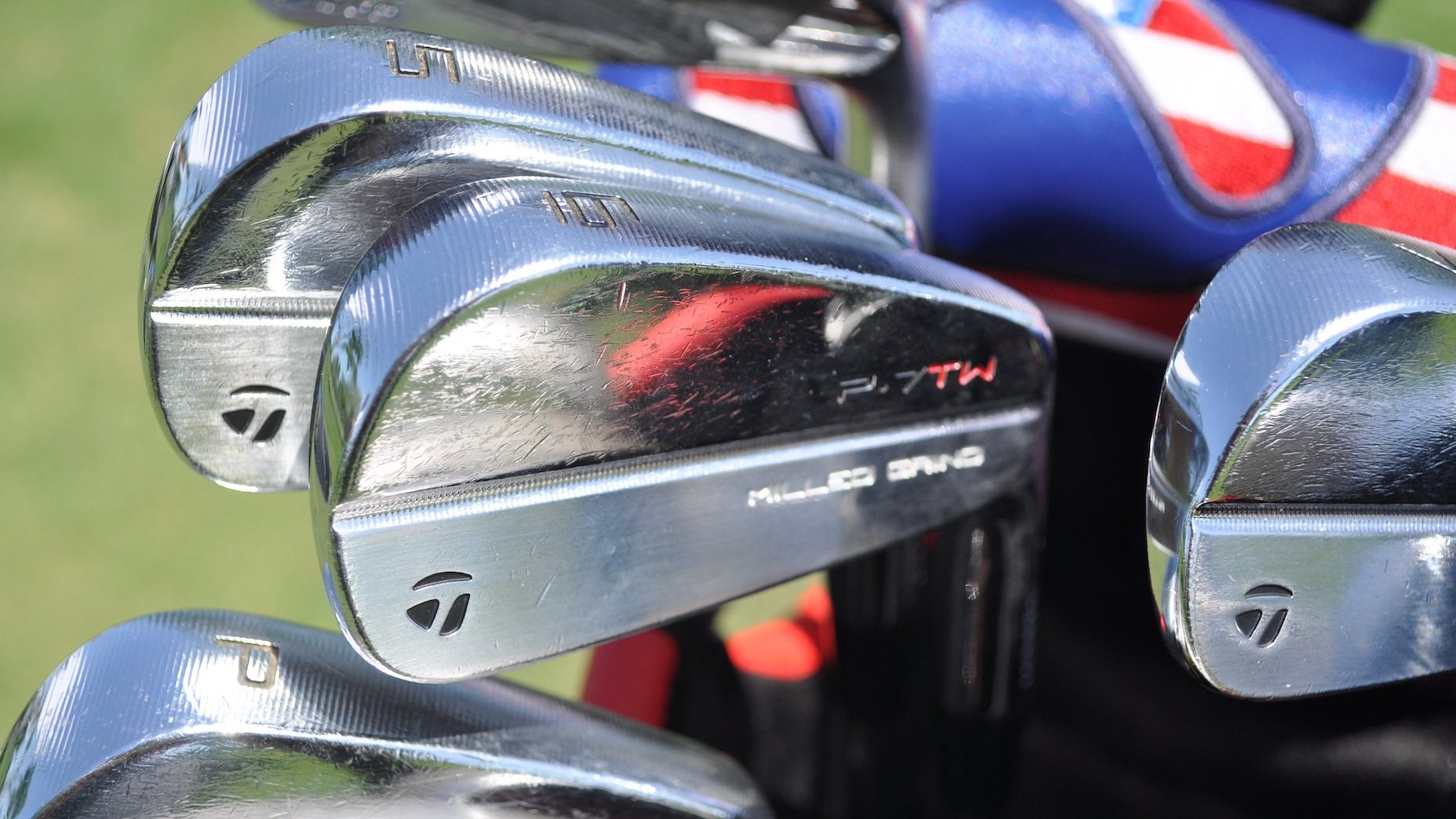
The gear crew at GOLF.com spends a lot of time at Tour events snapping photographs of the tools used by the best players in the world. Posting club images online without context works at times, but it doesn’t help the weekend golfer understand the why behind a pro’s setup. In this GOLF.com series, equipment editors Jonathan Wall and Ryan Barath answer those questions by highlighting interesting clubs in players’ bags, unique weighting, loft sleeve settings and more. Welcome to “Bay Spy.”
****
Scottie Scheffler will be the first to tell you his equipment setup is boring. Outside of the putter, very little has changed since the beginning of the year when he added a TaylorMade Stealth 2 Plus driver and Stealth 2 fairway wood to the bag — and it’s just the way he likes it.
During his pre-tournament press conference at the Tour Championship, Scheffler was asked how he weighs swing changes versus club changes when something is amiss. The former Masters champion freely admitted he “could pretty much figure out how to play with just about any club,” but tinkering comes with potential pitfalls.
“[I]t’s so hard for me to switch into new equipment because there’s just little, tiny changes,” he said. “Even, like, getting a new set of irons, I really don’t like having to switch into a new set of irons. There’s just little things that are different about each club. Like, they could make me five backup drivers in the TaylorMade truck and tell me they’re all the same and I’d hit ’em, and I’d be like, guys, I really don’t think that they’re the same.”
It’s one of the reasons why Scheffler keeps the tinkering to a minimum during the season and instead focuses on “form work out on the driving range, and then once I feel like I have a good feel for the form, then it just goes back into hitting shots and playing the game.”
It’s a simple but effective plan of attack that’s served Scheffler well during his career.
While the gear hasn’t changed much this season, there’s still a lot that can be gleaned from taking a look at Scheffler’s tools. Let’s zoom in on the five most interesting items in his bag.
Another one
Jonathan Wall/GOLF
I’d like to sit here and admit I saw the two 6-irons in the bag the first time around, but it actually took a heads-up from Scheffler himself to make me realize he carries 15 clubs in the bag on practice days.
The extra club is a second TaylorMade P7TW 6-iron with lead tape affixed to the back of the head — how he’s able to tell the two irons apart — and a “form grip” affixed to the end of the club that helps get his hands in the right position during practice sessions. It’s a glorified training club that helps keep his setup in top form.
As for the lead tape, it’s added for a specific reason.
“With all that rubber [from the form grip], it weighs more,” he said. “And so to match the swing weight, I added a bunch of weight to the head to match the swing weight. That’s the club that you’re seeing and it’s only in there for practice rounds when I warm up. Obviously, when I play in tournaments, it’s not in there because it’s a four-shot penalty.”
Utility man
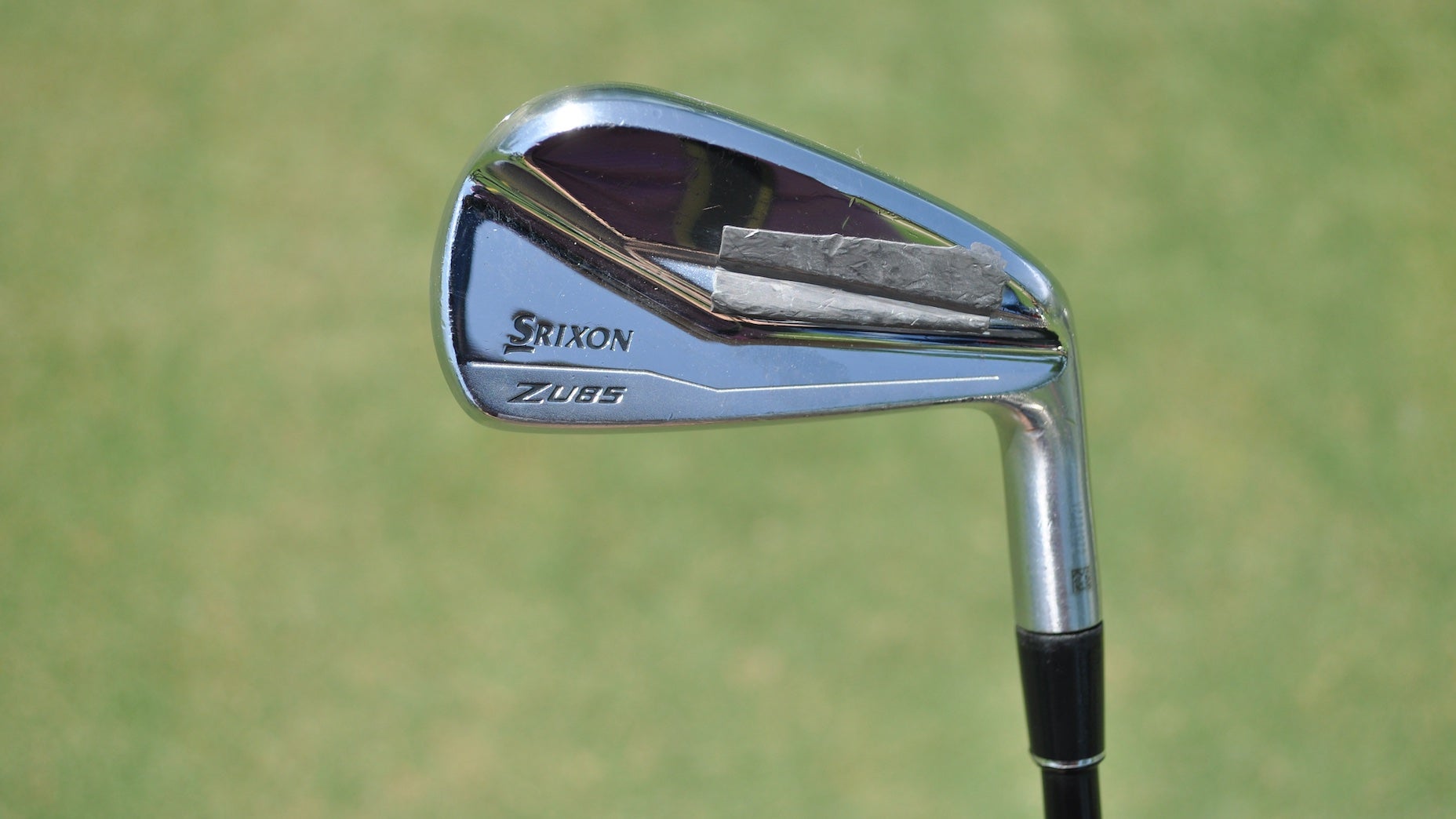
Jonathan Wall/GOLF
Earlier this year, GOLF’s gear team ran a test pitting a 3-iron, 3-hybrid and 7-wood against each other to highlight the differences in launch, spin and carry distance. In retrospect, we could’ve added a utility iron to the test as well. While the club isn’t nearly as popular as a hybrid or high-lofted fairway wood, it serves a valuable purpose for golfers who want a high launch with plenty of forgiveness in an iron profile.
Scheffler actually carries two in the bag — Srixon’s ZU85 3 and 4. While it’s commonplace to see pros with at least one utility iron, Scheffler added the 4 after struggling to find a suitable option at the top of the set. What makes the club unique is Scheffler didn’t work with a Tour rep to perfect the build. He did that on his own.
All of our market picks are independently selected and curated by the editorial team.
If you buy a linked product,
GOLF.COM may earn a fee. Pricing may vary.
Srixon ZX MK II Custom Utility Iron
$239.99
ZX Mk II Utility replacement long Irons offer every player—even tour pros—more long-game power, control, and forgiveness in a blade-like design with minimal offset and narrow toplines.
MAINFRAME
MainFrame is a variable thickness pattern of grooves, channels, and cavities carefully milled into the backside of the Iron face that maximizes flex at impact.
UTILITY IRON SHAPES
Our widest soles, combined with minimal offset and an appealing look at address, makes our forgiving, hollow, ZX Mk II Utility long Irons professional favorites.
FORGED MULTI-PIECE CONSTRUCTION
ZX Utility’s forged SUP10 faces are strong yet light — increasing face-flex at impact for enhanced speed and distance — while a forged 1020 Carbon Steel body absorbs vibrations for a softer feel.
SOLE NOTCHES
Sole notches on the heel and toe sides lessen drag by reducing the amount of surface area that contacts the ground. Ultimately, they provide better clubhead speed through turf and improve shot versatility without sacrificing forgiveness.
View Product
“We [built this one in the bag room at Royal Oaks Country Club],” Scheffler said. “It was a club I was struggling with for the last year, so we had it made up here, not on the truck. And when we do stuff here, we use a ton of lead tape.” (More on the lead tape in a moment.)
For Scheffler, the utility iron produces consistent yardages but still allows him to get away with the occasional miss. It’s also easy to flight the ball lower when he needs to during, say, the Open Championship or lift up high when high when the shot requires a soft landing. These utility irons can do it all.
Scottie the tinkerer
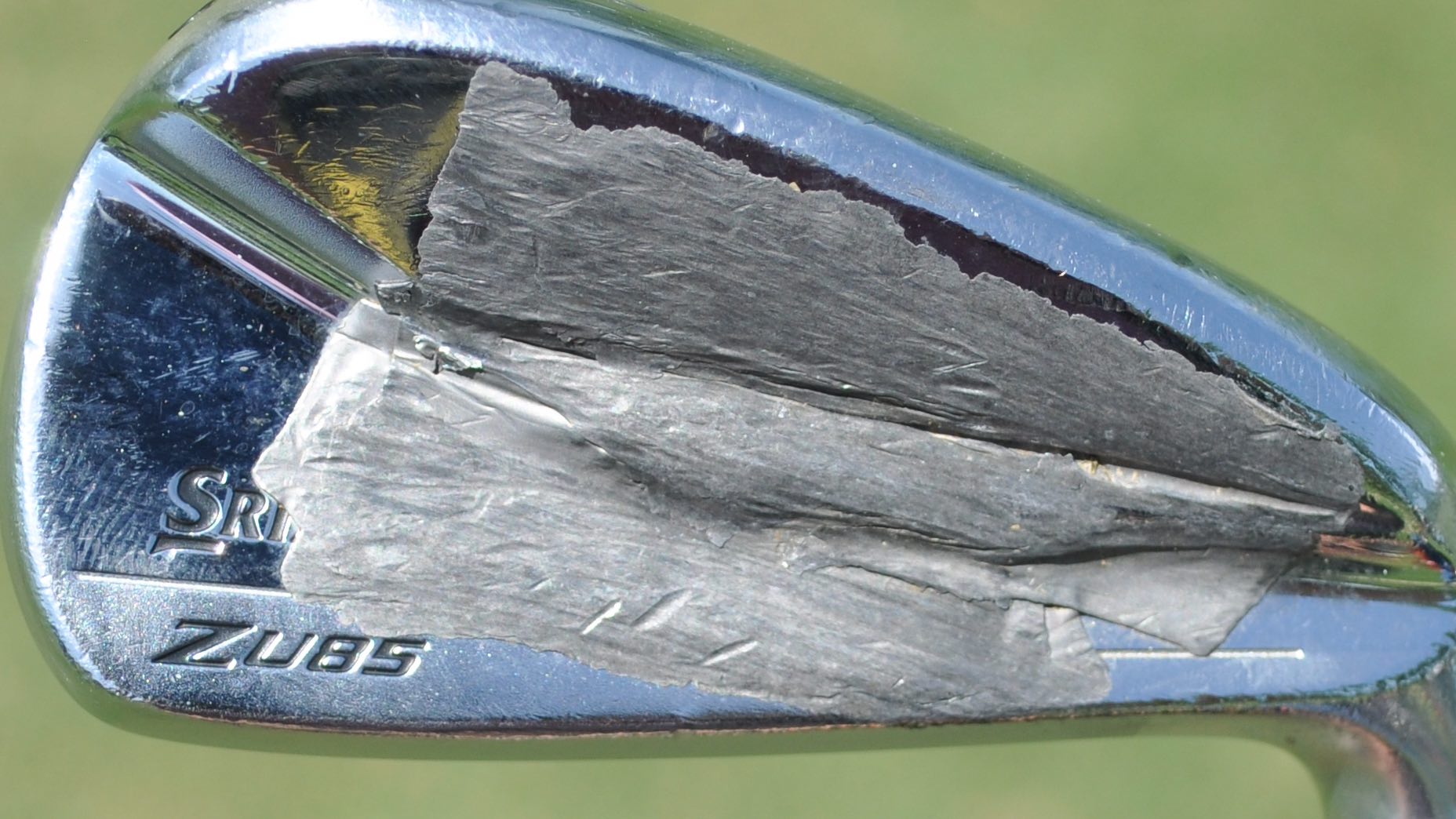
Jonathan Wall/GOLF
Remember when I said Scheffler didn’t do a lot of tinkering? Well, I lied. Scheffler admitted he’s a “big lead tape guy” who doesn’t mind slapping a few strips on a club when it’s needed.
Take a peek at Scheffler’s Srixon utility irons and you’ll see lead tape positioned in different spots on the head to alter launch and face closure at impact. As much as we want to believe Tour pros have all the answers, Scheffler admitted his lead tape application is “trial and error” to achieve the ideal club characteristics.
“The [3-iron] is different because [the lead tape] is more on the heel,” Scheffler said. “But that’s just a trial and error thing.”
We’ve written lead tape primers in the past to give you an idea of where it should go to alter shot shape and spin, but at the end of the day, it’s just fine to do your best Scottie Scheffler impression and move it around before it feels just right for your game.
Grooved
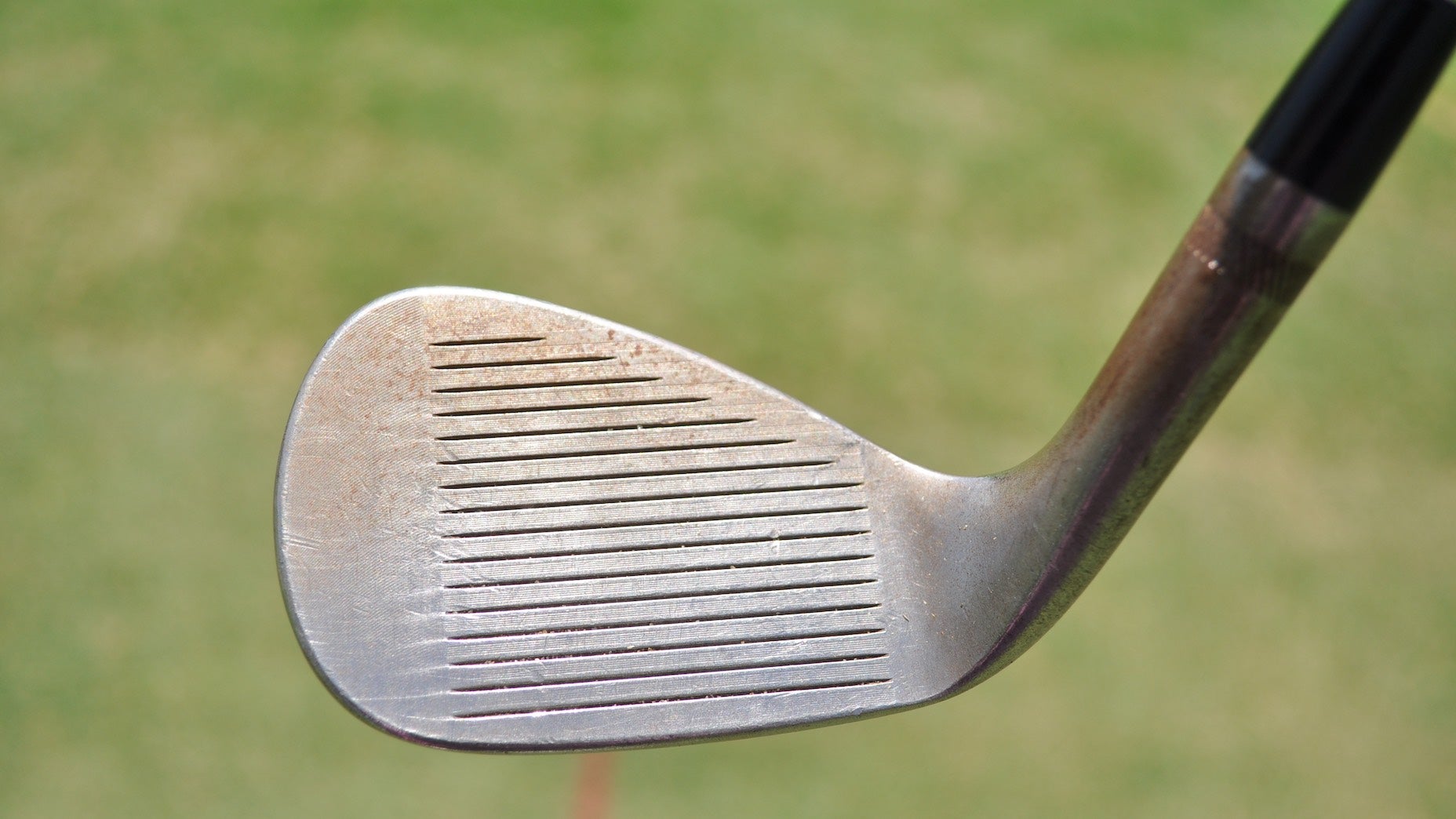
Jonathan Wall/GOLF
The general assumption is Tour players change out their wedges regularly. Grooves wear down from hitting endless range balls, thereby accelerating the timeframe for a fresh set of scoring clubs. That might be the case for the lob wedge, but the gap and sand wedge are a different story — at least in Scheffler’s case.
With Scheffler’s Titleist Vokey Design SM8 50-12F and 56-14F wedges, Scheffler might go more than a year without making a change.
Titleist Vokey SM9 Tour Chrome Custom Wedge
$179.99
For every shot, every lie, every course, there’s a grind fit for your swing. Finding the right grind to match your swing and playing conditions will give you the best turf interaction, contact and shot performance. Master Craftsman Bob Vokey has spent decades crafting, developing and improving his tour proven grinds to fit players of all levels.
Anyone can manufacture a wedge, but it takes a master to turn a piece of high-performance technology into an instrument of creative control. Bob’s six tour-proven grinds are designed to offer maximum creativity, versatility and consistency, all meticulously developed through years of working with the best players in the world.
PROGRESSIVE CENTER OF GRAVITY
SM9 features a progressive center of gravity (CG) throughout the lofts, which optimizes ball flight, accuracy and forgiveness. Using tapered top lines and varied hosel lengths, the Vokey R&D team has raised the height of the CG in the higher lofts, which promotes a lower, more controlled flight.
The CG is also forward of the face, resulting in increased MOI, exceptional feel and a club face that simply wants to square up at impact.
SPIN MILLED GROOVES
SM9’s patented Spin Milled grooves are meticulously engineered through a new cutting process to maximize spin and durability. The process starts by cutting the face perfectly flat with a high-speed saw. Then every groove is individually cut based on loft and finish; low lofts (46°-54°) are designed with narrower, deeper grooves, while higher lofts (56°-62°) have wider, shallower grooves.
Micro-grooves are individually cut in between grooves, which maximize spin on partial shots. A proprietary heat treatment is applied to the impact area which doubles the durability of the groove without impacting feel, making it the most durable groove in golf. The process is only complete when every Vokey wedge is 100% inspected for utmost quality and performance.
View Product
“I don’t like changing [the 50 and 56] all that often,” Scheffler said. “A lot of times if I’m hitting [the 50 and 56], I’m not trying to add a lot of spin, so I don’t need fresh grooves.”
As for the 60-degree, Scheffler throws a fresh one in the bag every month or two in an attempt to maintain as much spin as possible around the green. With the 50 and 56, he doesn’t need the same zip; it’s all about maintaining consistent spin for his stock yardages.
Ryder Cup ready
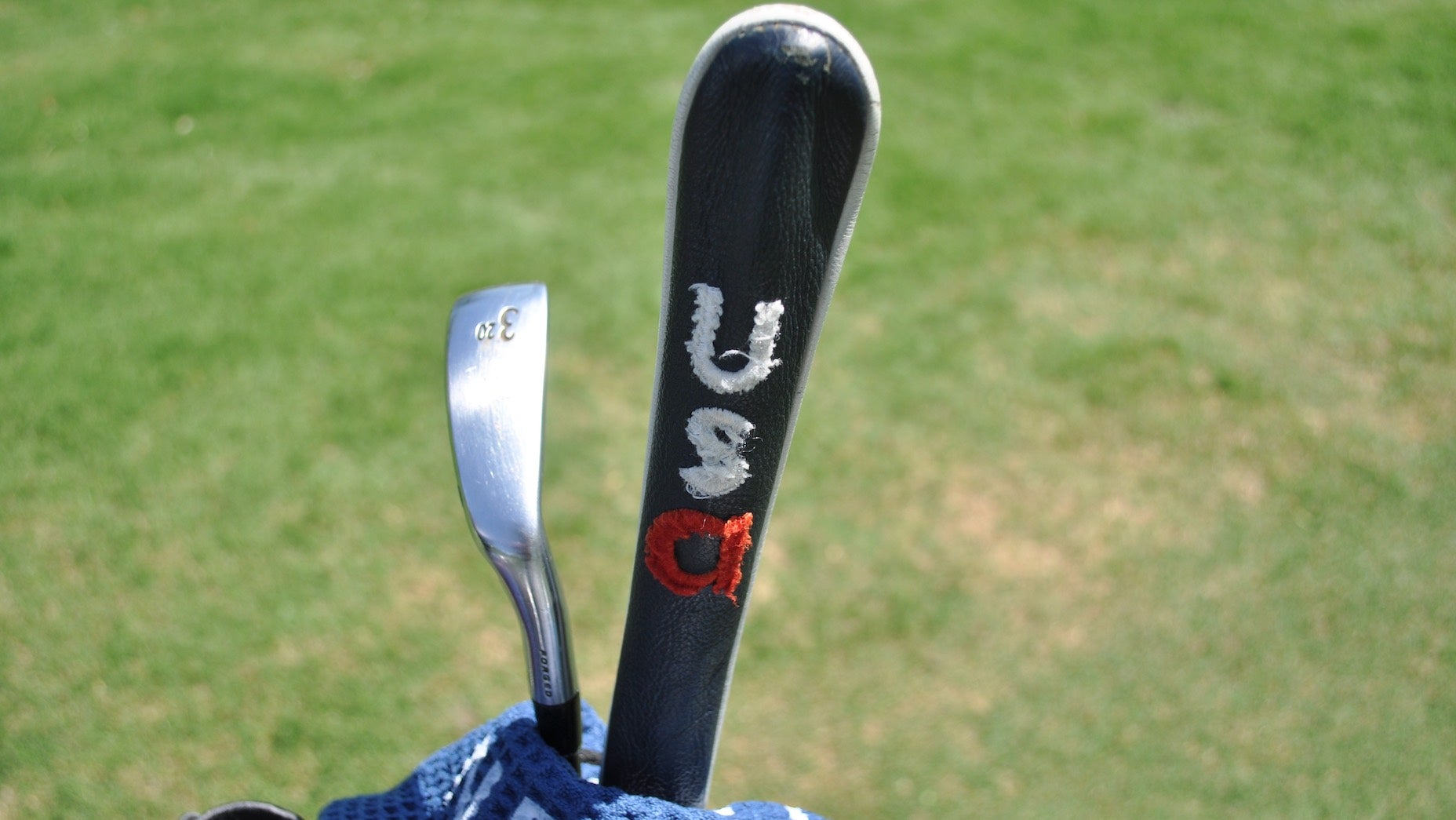
Jonathan Wall/GOLF
With the biennial matches commencing in roughly one month, it seems fitting to highlight a piece of gear from Scheffler’s appearance on Team USA two years ago. Protecting his alignment rods — sticks that help him line up to the target and work on setup during practice sessions — is a worn USA cover from the decisive victory over Europe at Whistling Straits.
With an abundance of Ryder Cup swag in his future, it’s possible the cover gets replaced next month. As for why pros cover the rods with a cover, it keeps them from banging around in the bag with the clubs and gives the gear setup a bit of personality.
Want to overhaul your bag for 2023? Find a fitting location near you at True Spec Golf.










